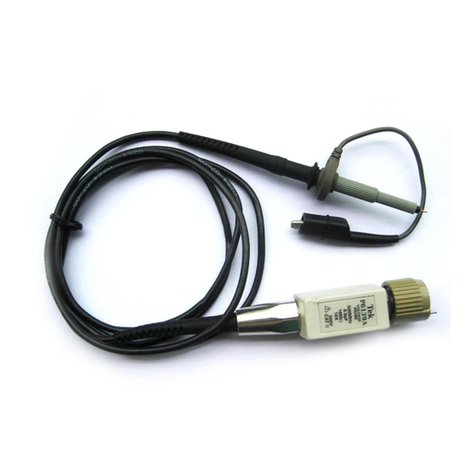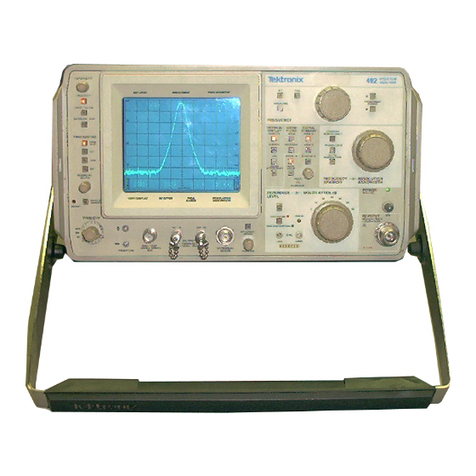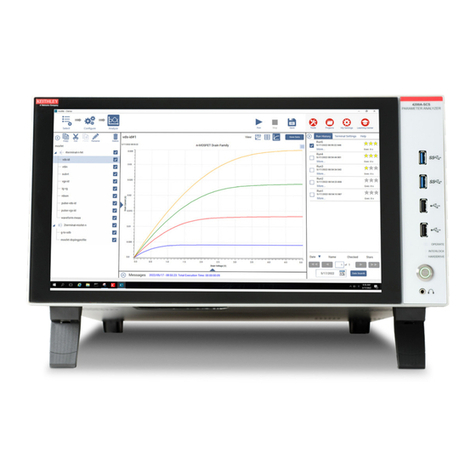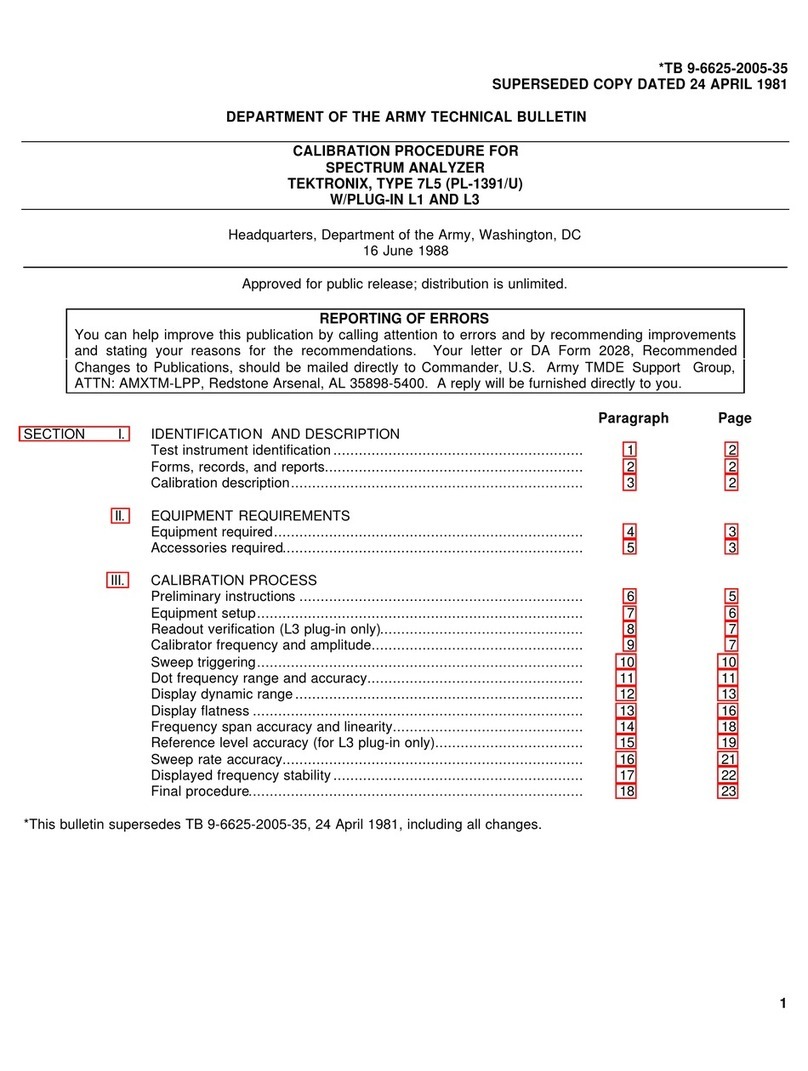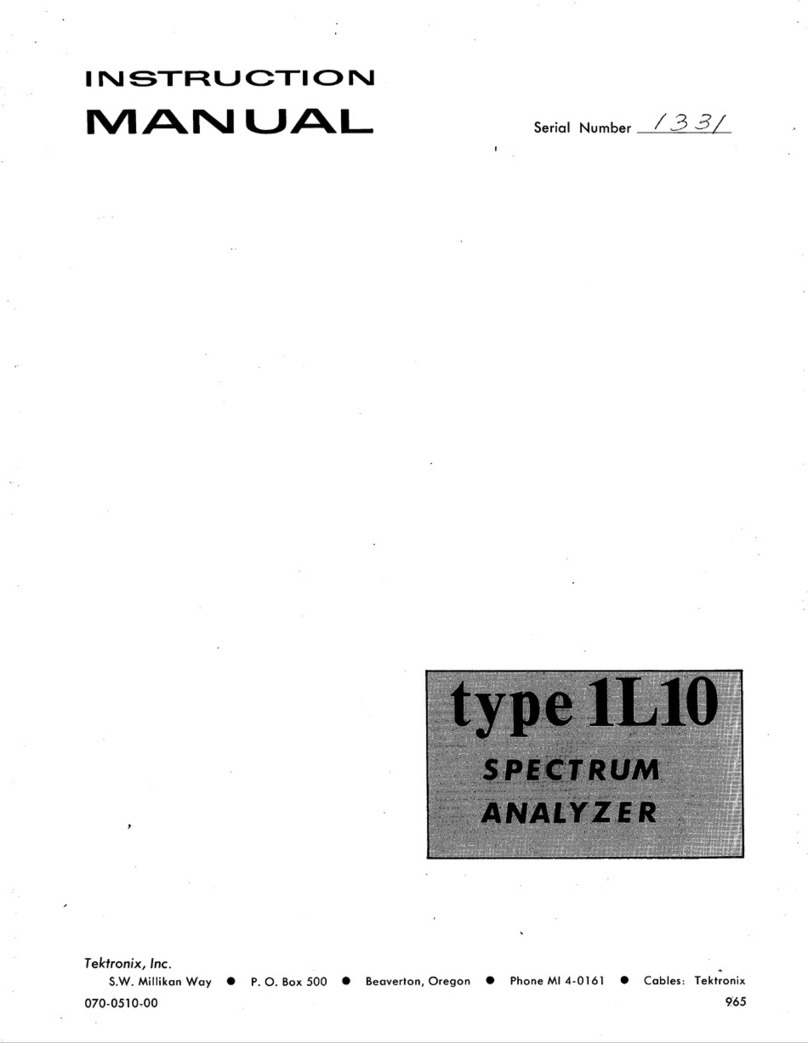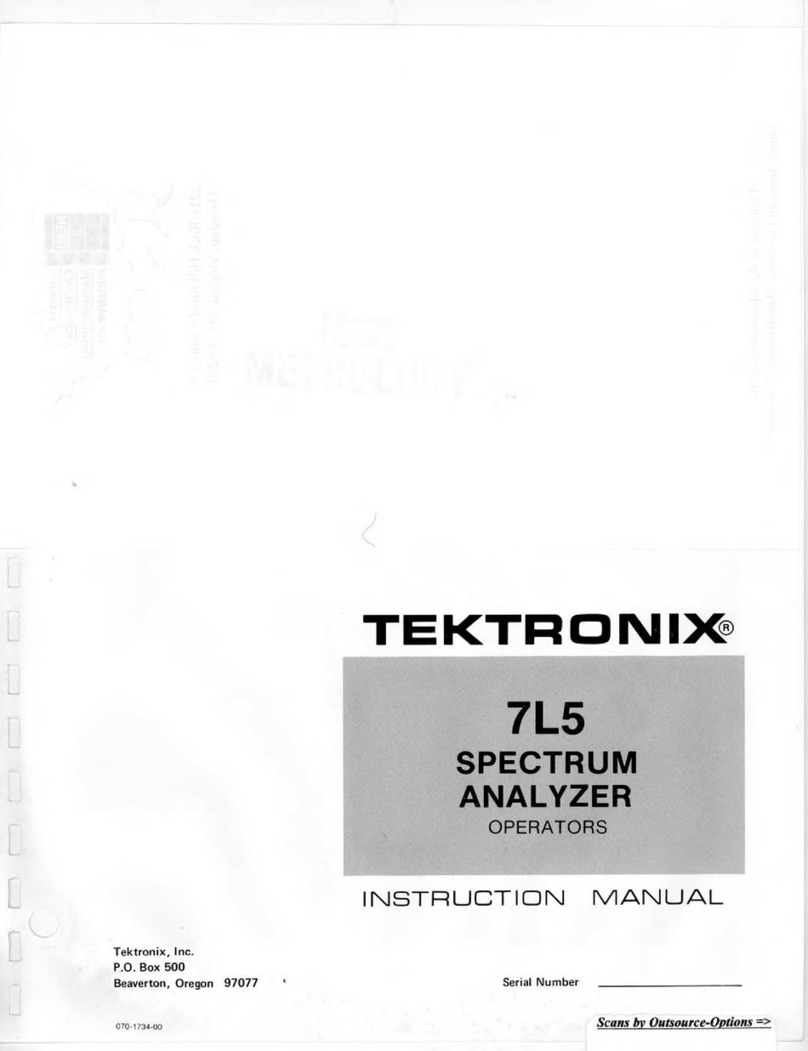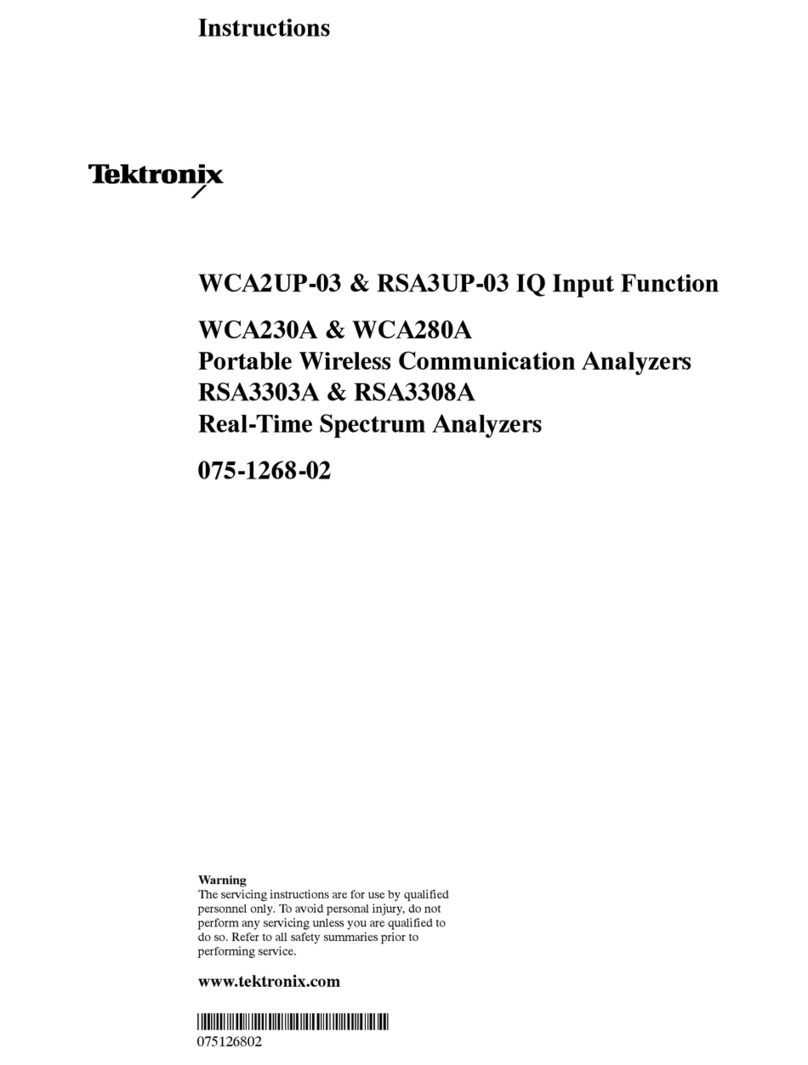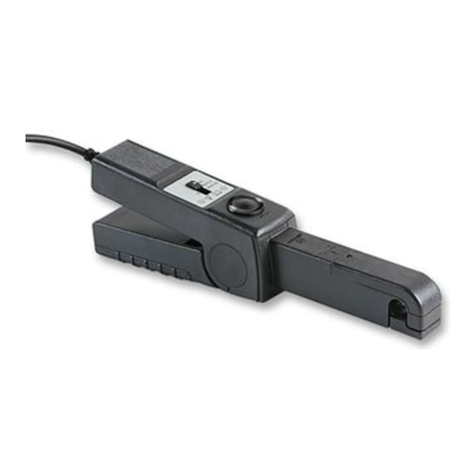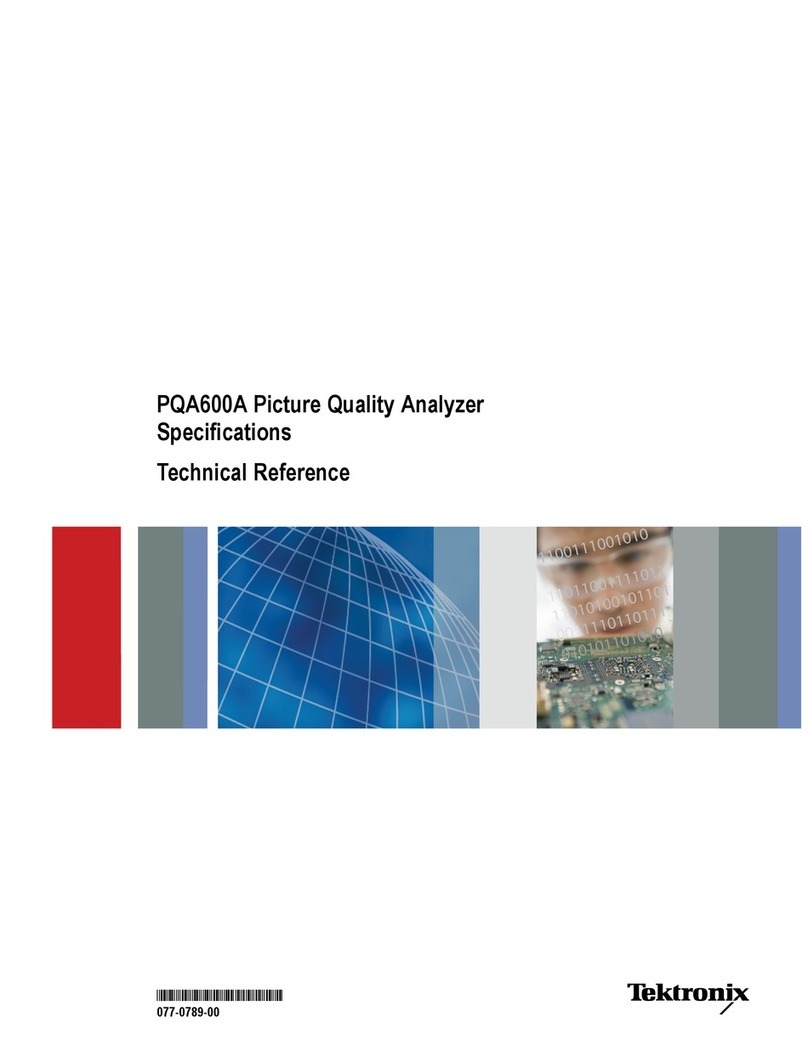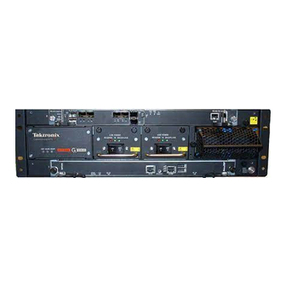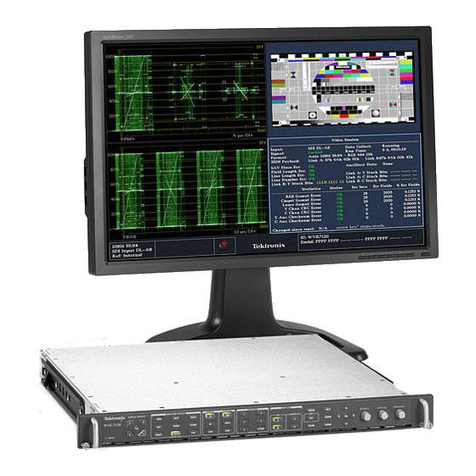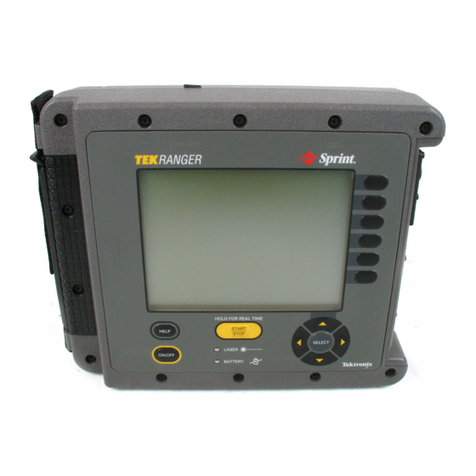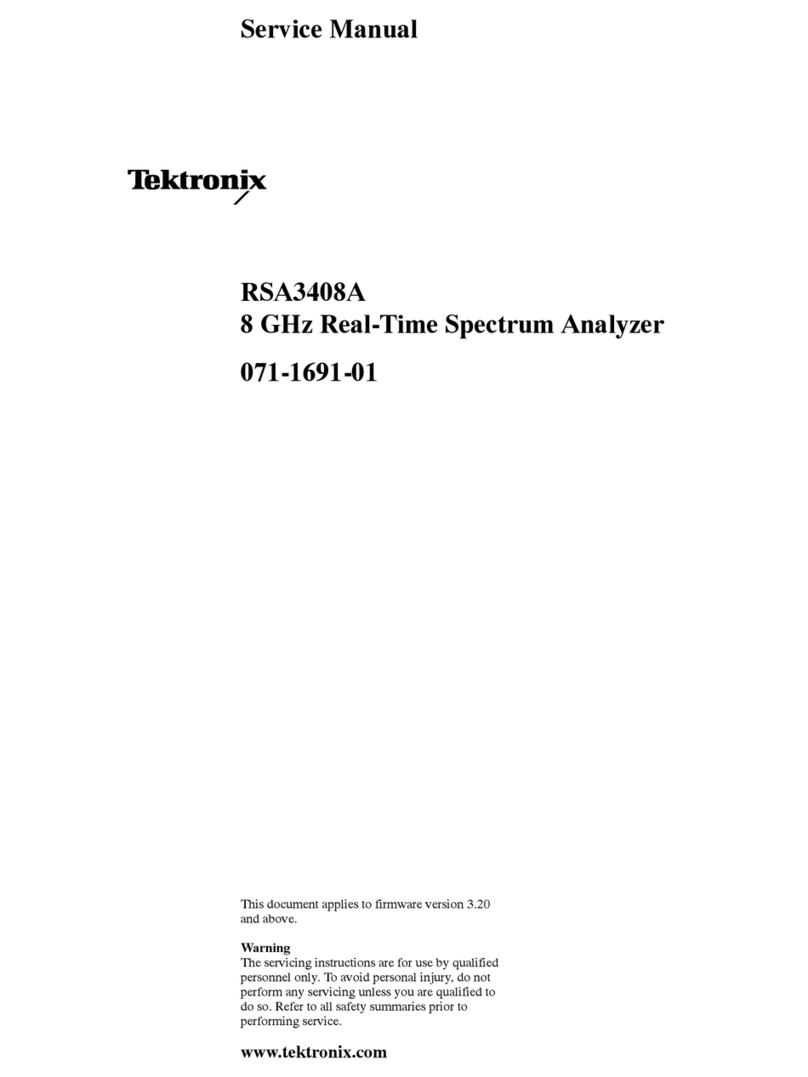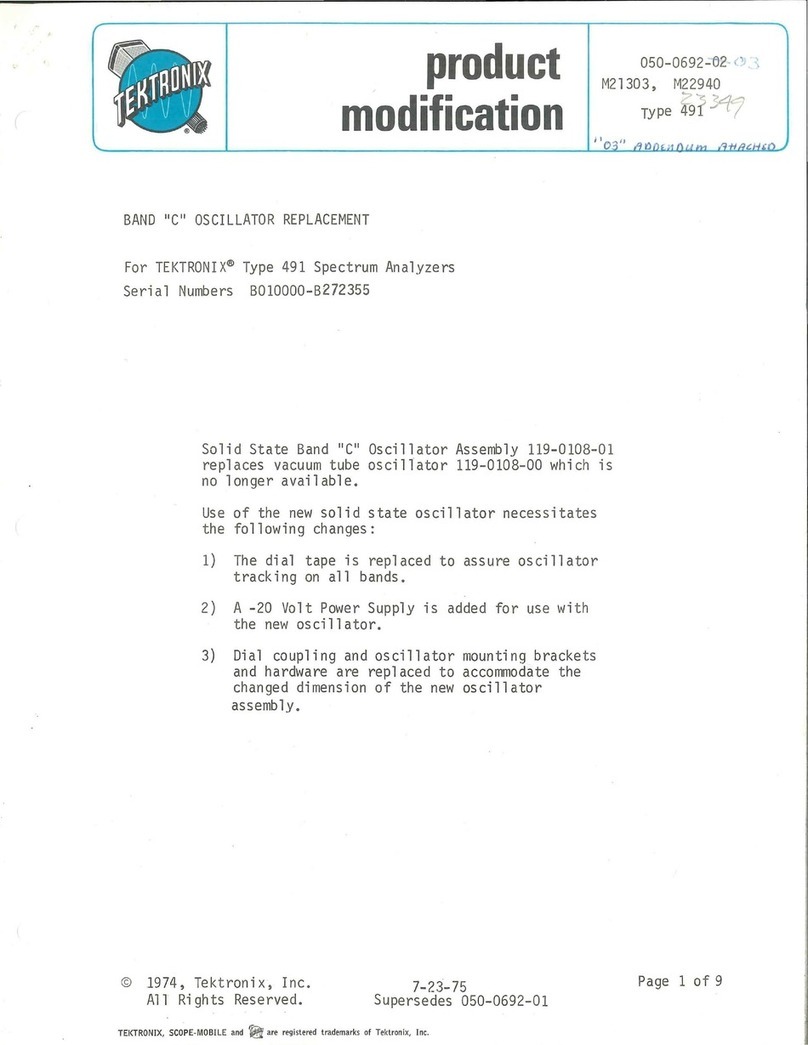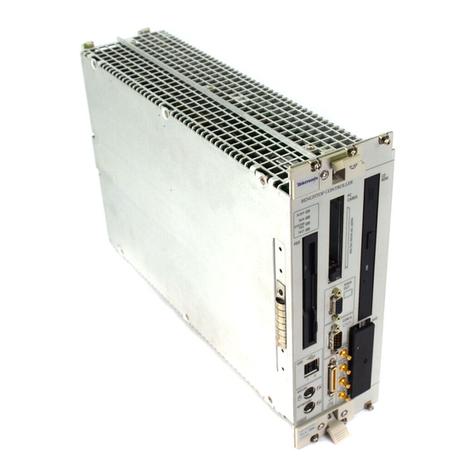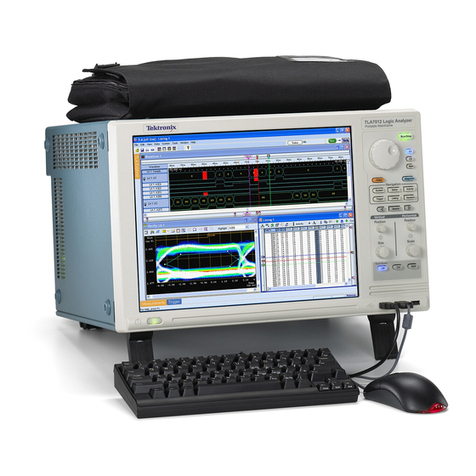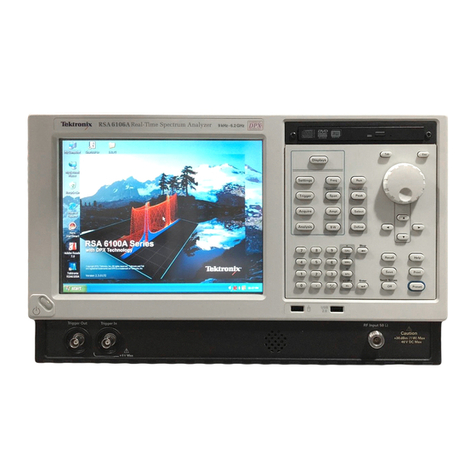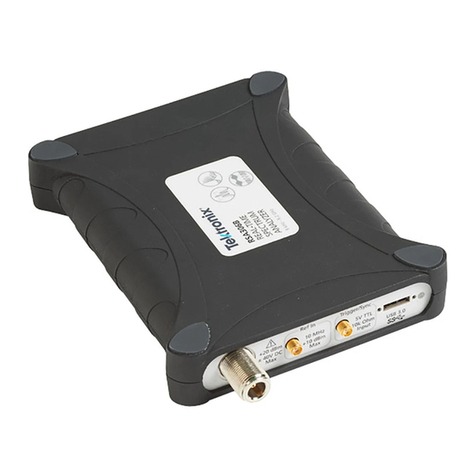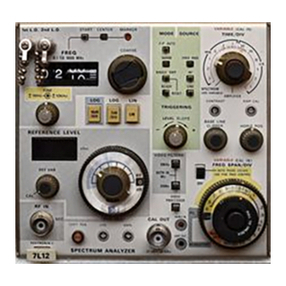
Opera ing Ins ruc ions— Type 1L40
Minimum usable dispersion—The narrowest dispersion
obtainable for meaningful analysis. Defined as ten times
the incidental frequency modulation when limited by “ inci
dental frequency modulation" (in units of Hz).
Phase lock—The frequency synchronization of the local
oscillator with a stable reference frequency.
Resolu ion—The ability of the spectrum analyzer to
resolve and display adjacent signal frequencies. The meas
ure of resolution is the frequency separation (in Hz) of two
equal amplitude signals, the displays of which merge at
the 3 dB-down point. The resolution of a given display
depends on three factors; sweep speed, dispersion and the
bandwidth of the most selective (usually last IF) amplifier.
Resolu ion bandwid h—The —6dB bandwidth with
Gaussian response of the analyzer, with the dispersion and
sweep time adjusted for the minimum displayed bandwidth
of a CW signal. Resolution and resolution bandwidth be
come synonymous at very long sweep times.
Op imum resolu ion—the best resolution obtainable
for a given dispersion and a given sweep time. Theoreti
cally or mathematically:
_ . , . dispersion (in Hz)
Optimum resolution =
------------
;
------
-
------------
r-r
sweep time (in seconds)
Op imum resolu ion bandwid h—The bandwidth at
which best resolution is obtained for a given dispersion
and sweep time.
Theoretically and mathematically:
_ . . ,, Dispersion (in Hz)
Optimum resolution bandwith = .66 —
----------
;
-----
-
-----------
r-.
Sweep time (in seconds)
Safe power level—The upper level of input power
that the spectrum analyzer can accommodate without physi
cal damage (usually in units of dBm).
Scanning veloci y—Product of dispersion and sweep
repetition rate units of Hz/unit time.
Sensi ivi y— Rating factor of spectrum analyzers ability
to display signals.
1. Signal equals noise: That input signal level (usually
in dBm) required to produce a display in which the signal
level above the residual noise is equal to the residual
noise level above the baseline. Expressed as: Signal -f
noise = twice noise.
2. Minimum discernible signal: That input signal level
(usually in dBm) required to produce a display in which
the signal is just visible within the noise.
Skir selec ivi y—A measure of the resolution cap-
bility of the spectrum analyzer when displaying signals of
unequal amplitude. A unit of measure (usually in Hz) is the
bandwidth at some level below the 6dB down points.
For example lOdB, 2 dB or 4 dB down.
Spurious response (spurii, spur)—an erroneous display
or signal which does not conform to the indicated frequency
or dial reading. Spurii and spur are the colloquialisms used
to mean spurious response (plural) or spurious response
(singular) respectively. Spurious responses are of the follow
ing type:
1. IF feedthrough—Signal frequencies within the IF pass-
band of the spectrum analyzer that are not converted in
the first mixer but pass through the IF amplifier and produce
displays on the CRT that are not tunable with the RF center
frequency controls.
2. Image response— The superheterodyne process results in
two major IF responses, separated from each other by twice
the IF. The spectrum analyzer is usually calibrated to only
one of these two responses. The other is called the image.
3. Harmonic conversion—The spectrum analyzer will re
spond to signals that mix with harmonics of the local os
cillator and produce the intermediate frequency. Most
spectrum analyzers have dials calibrated for some of these
higher order conversions. The uncalibrated conversions are
spurious responses.
4. Intermodulation— In the case of more than one input
signal, the myriad of combinations of the sums and differ
ences of these signals between themselves and their multi
ples, creates extraneous responses known as intermodu
lation. The most harmful intermodulation is third order,
caused by the second harmonic of one signal combining
with the fundamental of another.
5. Video detection—The first mixer will act as a video
detector if sufficient input signal is applied. A narrow pulse
may have sufficient energy at the intermediate frequency
to show up as intermediate frequency feedthrough.
6. Internal—A spurious response on the display caused by
a signal generated within the spectrum analyzer that is in
no way connected with an external signal.
7. Anomalous IF responses—The filter characteristic of the
resolution-determining amplifier may exhibit extraneous
pass-bands. This results in extraneous spectrum analyzer
responses when a signal is being analyzed.
8. Zero frequency feedthrough-—(zero pip)—The response
produced when the first local oscillator frequency is within
the IF passband. This corresponds to zero input frequency
and is sometimes not suppressed so as to act as a zero
frequency marker.
Sweep repe i ion ra e— The number of sweep excursions
per unit of time. Approximately the inverse of sweep time
for a free-running sweep.
Sweep ime— The time required for the spot in the refer
ence coordinate (frequency in spectrum analyzer) to move
across the graticule. (In a linear spectrum system, sweep
time is Time/Division multiplied by total divisions.)
CONTROLS AND CONNECTORS
The following is a brief description of the operation or
function of these controls and connectors on the front panel.
See Fig. 2-3. A more detailed description is provided later
in this section under general operating information.
DISPERSION Selects the range of the DISPERSION
RANGE control; MHz/CM position provides a
frequency dispersion range from 1
MHz to .2MHz/cm. kHz/CM position
provides frequency dispersion range
from 5 kHz/cm to dispersion.
2-3
